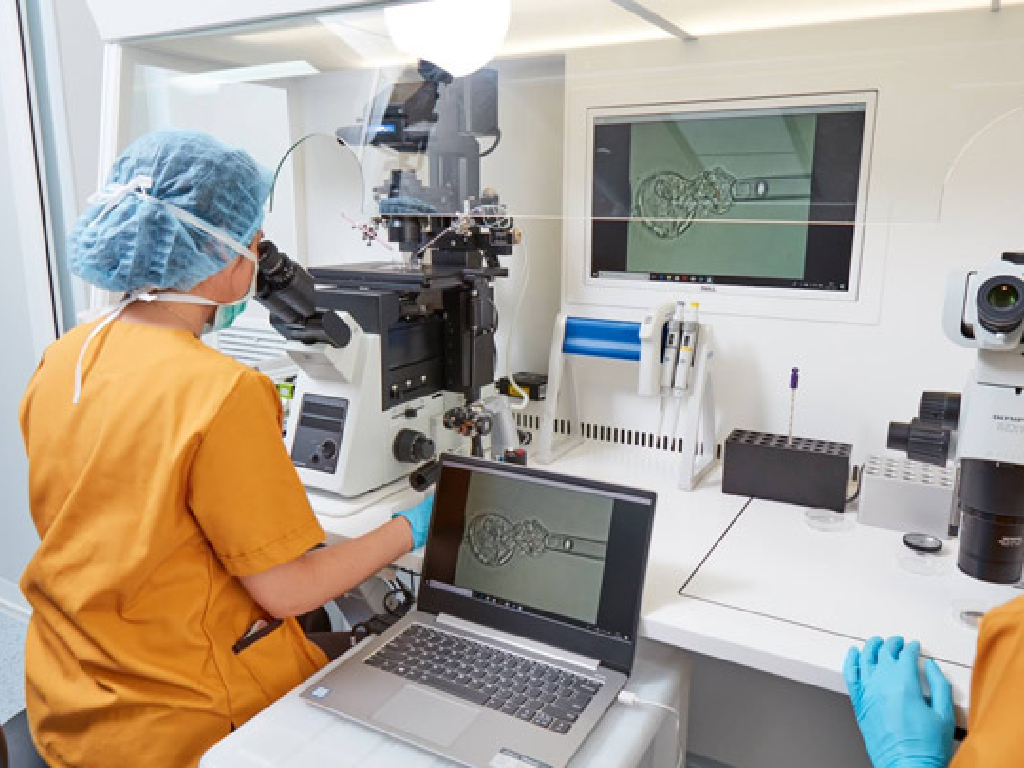Tüp bebek tedavisi, milyonlarca çiftin çocuk sahibi olmasını sağlayan modern bir yöntemdir. Ancak toplumda tüp bebek ile ilgili birçok yanlış bilgi dolaşmaktadır. Bu yazıda en sık duyulan “doğru bilinen yanlışları” sizler için derledik.
Yanlış 1: Tüp bebek tedavisi her zaman başarıyla sonuçlanır.
Doğru: Başarı oranı; kadının yaşı, yumurta rezervi, embriyo kalitesi ve rahim sağlığına bağlıdır. İlk denemede başarısızlık mümkündür.
Yanlış 2: Tüp bebek tedavisi bebeklerde anomali riskini artırır.
Doğru: Araştırmalar, tüp bebek yoluyla doğan bebeklerin sağlık durumunun doğal yollarla doğan bebeklerle benzer olduğunu göstermektedir.
Yanlış 3: Kullanılan ilaçlar kansere neden olur.
Doğru: Tüp bebekte kullanılan hormon ilaçlarının kansere yol açtığına dair bilimsel bir kanıt yoktur.
Yanlış 4: Transfer sonrası mutlaka yatak istirahati gerekir.
Doğru: Yalnızca ağır aktivitelerden kaçınmak yeterlidir. Uzun süre yatmak, kan dolaşımını bozup psikolojik stresi artırabilir.
Yanlış 5: İlaçlar kilo aldırır.
Doğru: Hormonlar geçici şişkinlik ve ödem yapabilir ancak kalıcı kilo alımı genellikle gebelikten kaynaklanır.
Yanlış 6: Tüp bebek tedavisinde mutlaka çoğul gebelik olur.
Doğru: Günümüzde çoğul gebeliği önlemek için tek embriyo transferi önerilmektedir.
Yanlış 7: Tüp bebek erken menopoza yol açar.
Doğru: Toplanan yumurtalar, o ay zaten kaybolacak yumurtalardır. Menopoz yaşı öne çekilmez.
Yanlış 8: İlk denemede gebelik oluşmaz.
Doğru: Birçok çift ilk denemede gebelik elde edebilir. Başarı şansı kişiye özeldir.
Yanlış 9: İnfertilite yalnızca kadına bağlıdır.
Doğru: Erkek ve kadın kaynaklı infertilite oranı benzerdir. Çoğu zaman sorun her iki tarafta da bulunabilir.
Yanlış 10: Tüp bebekle gebe kalan kadınlar normal doğum yapamaz.
Doğru: Tüp bebek yalnızca gebeliği sağlar. Doğum şekli, gebelik sürecine göre belirlenir.
Yanlış 11: Düşük kaliteli embriyodan sağlıklı gebelik oluşmaz.
Doğru: Transfer edilen her embriyonun gebelik şansı vardır. Çok düşük kaliteli olanlar zaten transfer edilmez.
Yanlış 12: Genetik test sonucu anormalse, sonraki denemeler de anormal çıkar.
Doğru: Her embriyo bağımsızdır. Her denemede sağlıklı embriyo elde etme ihtimali vardır.
Yanlış 13: Âdet görmeyen genç kadın hamile kalamaz.
Doğru: Polikistik over sendromu veya hormon bozuklukları gibi tedavi edilebilir nedenler olabilir.
Yanlış 14: Tüp bebek sonrası doğal gebelik oluşmaz.
Doğru: Özellikle tüplerin açık olduğu ve sperm kalitesinin fena olmadığı çiftlerde doğal gebelik mümkündür.
Yanlış 15: Tüp bebek tedavisine sadece âdetin ilk günlerinde başlanır.
Doğru: Uygun folikül gelişimi varsa tedavi döngünün farklı zamanlarında da başlayabilir.
Yanlış 16: Bir adet döneminde iki kez yumurta toplanmaz.
Doğru: Çift stimülasyon (DuoStim) ile aynı ay içinde ikinci yumurta toplama yapılabilir.
Yanlış 17: Çikolata kistleri mutlaka alınmalıdır.
Doğru: Küçük ve tedaviye engel olmayan kistlere dokunulmaz. Cerrahi ancak özel durumlarda tercih edilir.
Yanlış 18: Tüpler bağlıysa tüp bebek yapılamaz.
Doğru: Tüpler kapalı olsa bile tüp bebek yapılabilir. Yeter ki rahim sağlıklı ve sperm mevcut olsun.
Yanlış 19: İlaçsız tüp bebek tedavisi olmaz.
Doğru: Doğal (natürel) tüp bebek yöntemleri, uygun hastalarda ilaçsız olarak uygulanabilir.
Yanlış 20: Tüp bebek ile istenilen yaşta çocuk sahibi olunabilir.
Doğru: Kadın yaşı en kritik faktördür. İleri yaşta yumurta kalitesi düştüğü için başarı oranı azalır. Bu nedenle genç yaşta yumurta veya embriyo dondurma ileride bir sigorta görevi görebilir.




